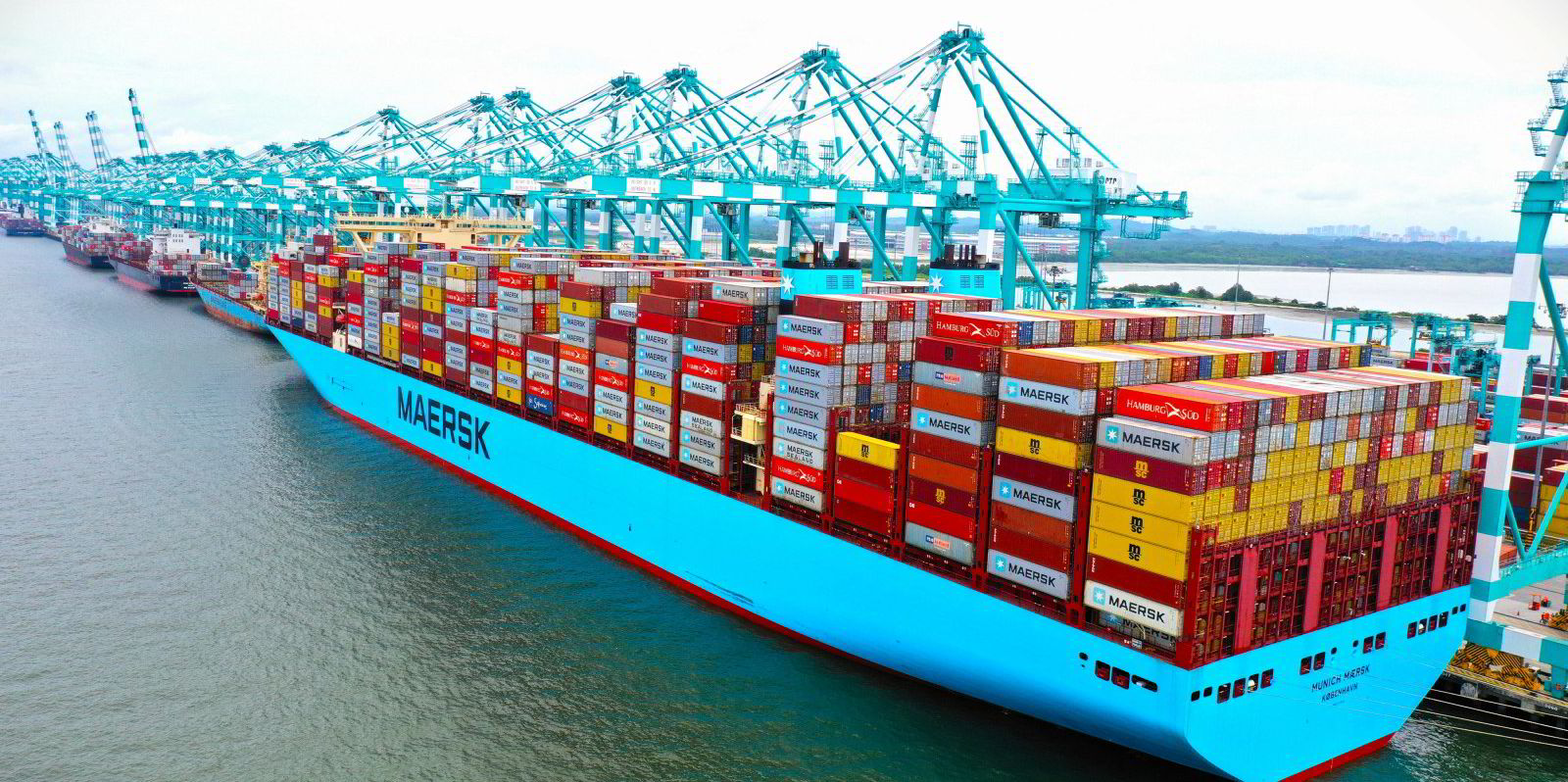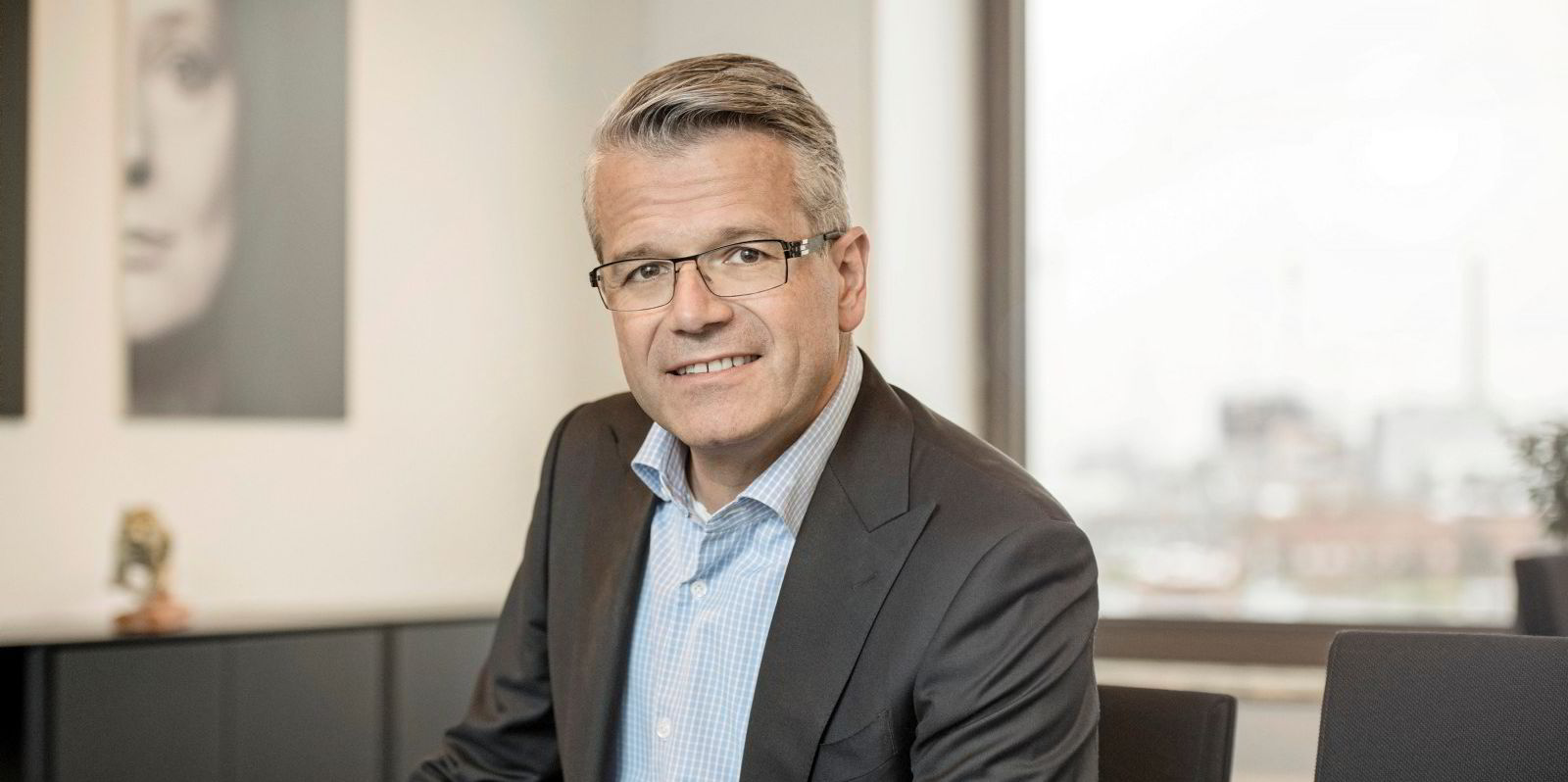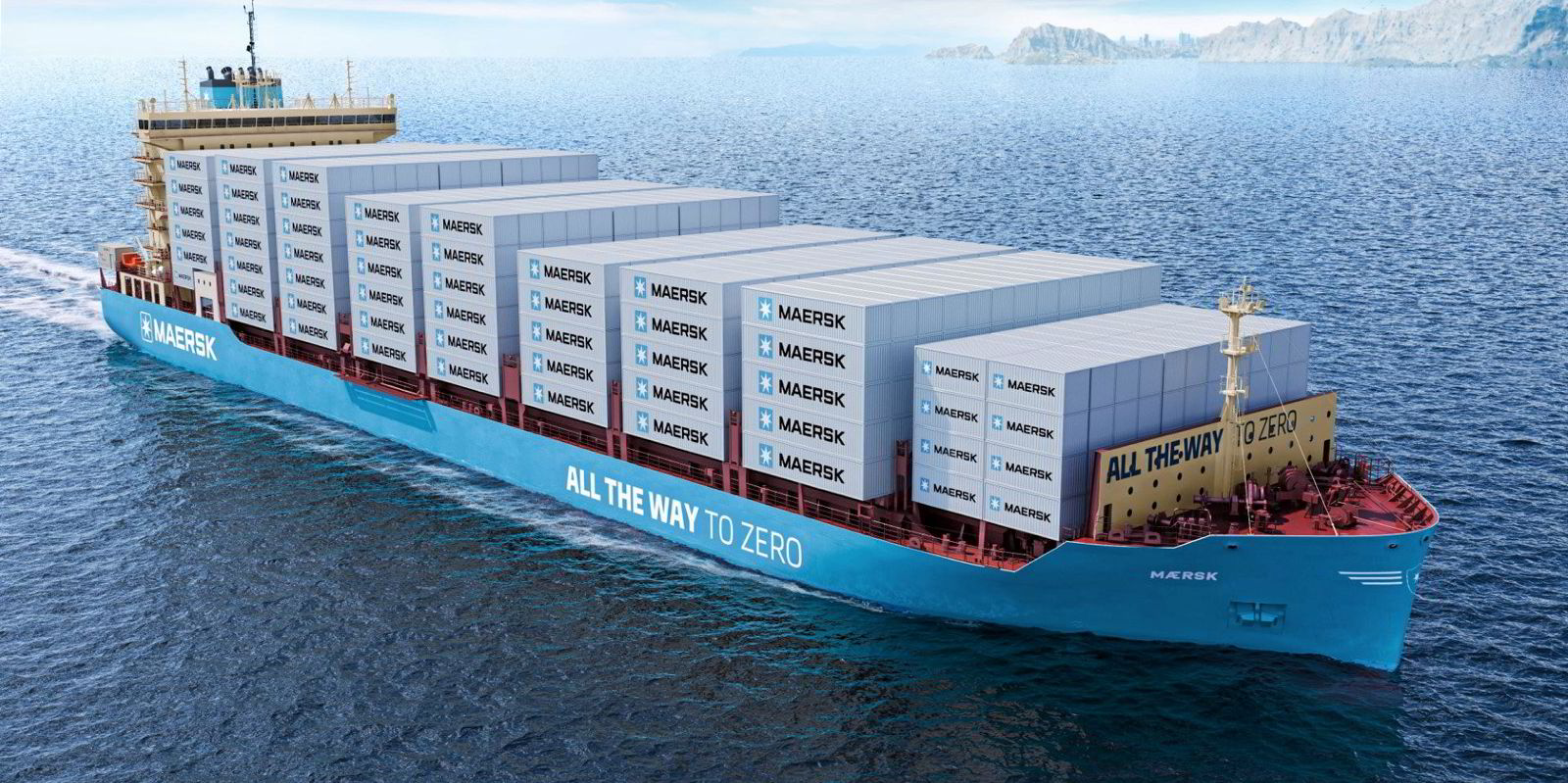Danish liner giant AP Moller-Maersk has raised its financial guidance after performing better than expected in the year to date.
The Copenhagen company says underlying Ebitda should come in at between $9.5-11bn this year, compared with earlier guidance of $8-11bn.
Ebit is projected to come in at between $3.5-5bn, instead of between $2-5bn.
The upgrade comes after a “robust” second quarter in what the company described as difficult conditions.
Profit for the world’s second largest liner operator beat market expectations at $1.48bn in the second quarter. That is sharply down from the extraordinary profit of $8.6bn in the same quarter last year.
Revenues dropped to $13bn from $21.6bn in the previous corresponding period.
Volumes and rate trends had unfolded as anticipated in the second quarter, the company said.
The ongoing market normalization had led to lower volumes and lower rates.
But strict cost controls had helped the liner giant turn in a second quarter result ahead of expectations.
“We responded to sharp changes in market conditions prompted by destocking and subdued growth environment following the pandemic-fueled years,” said chief executive Vincent Clerc.
“Our decisive actions on cost containment together with our contract portfolio cushioned some of the effects of this market normalization,” he added.
Bleak prognosis
Maersk has however emerged with a bleak prognosis for the container shipping market going forward.
The Copenhagen-based company said the inventory correction observed since the end of last year appears to be “prolonged” and is expected to last through year-end.
Given the weak start of the year and the continued destocking, global container volume growth shrank faster than initially expected.

Global box volumes are forecast to contract the range of -4% to -1% compared to -2.5% to +0.5% previously.
That implies that Maersk’s fleet could shrink, as the company expects its Ocean division to grow in line with the market.
The company said the container market had normalized as expected as rates continued to come off their 2022 peak.
Volumes remained weak due to continued destocking, particularly in North America and Europe.
But cost measures provided strong support to profitability in the second quarter and will continue to be deployed in the second half.
“Cost focus will continue to play a central role in dealing with a subdued market outlook that we expect to continue until end year,” said Clerc.
“While we step this agenda further up, we are unwavering in our transformation and continue to invest in and deliver truly integrated logistics solutions to our customers and amplify their supply chain resilience for the uncertain times ahead.”
Ocean revenue decreased to $8.7bn from $17.4bn driven by a decrease in freight rates and loaded volumes.
The volume and rate environment stabilised at a lower level during the second quarter, the company said.
But Ocean continued to be impacted by lower demand, driven by a significant inventory correction in particular in North America and Europe.
Revenue in logistics & services fell slightly to $3.4bn while revenues in terminal division decreased to $950m.





